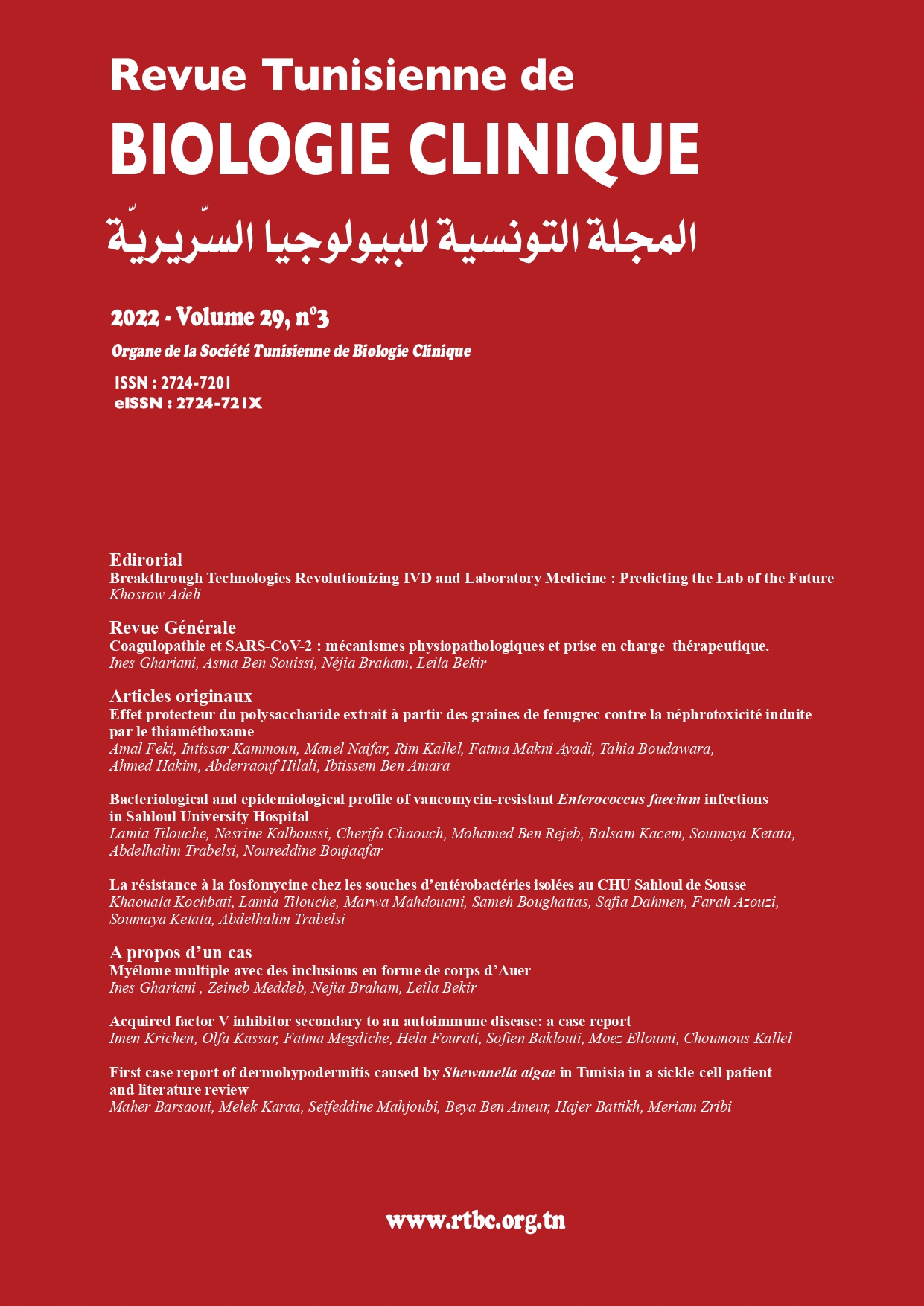Abstract
Introduction : Shewanella algae (S. algae ) is an opportunistic bacterium, widespread in the marine environment, that can cause soft tissue infections often secondary to trauma. Objectives : We report the first case of S. algae dermohypodermitis in a diabetic with sickle cell disease. Case report : A 51-year-old man with homozygous sickle cell disease and type 2 diabetes, who occasionally worked at the fish market, was admitted to La Rabta University Hospital for dermohypodermitis of the leg. He received amoxicillin and clavulanic acid based antibiotic therapy combined with debridement of tissues of doubtful vitality. Intraoperative specimens were cultured on agar plates: nutritive agar, blood agar (horse 5%), cooked blood agar supplemented with Polyvitex® (bioMérieux®, France) and Drigalski agar and in heart-brain broth. An anaerobic culture was simultaneously performed on blood agar. Identification was performed by VITEK-2 (bioMérieux®, France) and showed Klebsiella pneumoniae and a gram-negative, salmon-brown mucoïd bacillus on blood agar and cooked blood agar, identified as S. algae. Antibiotics testing was realized according to CA-SFM/EUCAST (2020) recommendations with sensitivity to third generation cephalosporins, piperacillin/tazobactam and aminoglycosides. The patient improved after adaptation of antibiotic therapy. Conclusion : This case underlines the importance of considering Shewanella spp. as a cause of soft tissue infections acquired in open water.

This work is licensed under a Creative Commons Attribution 4.0 International License.
Copyright (c) 2022 Revue Tunisienne de BIOLOGIE CLINIQUE

